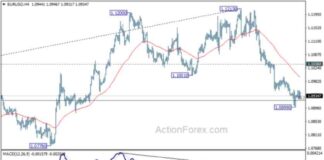Crude oil prices have been on a rollercoaster ride recently, with a sharp recovery seen from the $65.50 support level. The market has shown signs of resilience, with bulls stepping in to push the price above $67.50. However, there are still key resistance levels to watch out for, particularly around the $70.50 and $72.00 zones.
Technical analysis of crude oil prices on the 4-hour chart of XTI/USD reveals a challenging path ahead. While the price has managed to break above the $68.50 resistance, it remains below the 100 and 200 simple moving averages. The next hurdles for the bulls include the $70.50 level and the $72.00 zone, where a significant retracement level lies.
A major bearish trend line is forming with resistance at $72.50, indicating that further upside momentum may face resistance at this level. On the downside, a break below $68.50 could signal a larger decline towards the $65.50 support, with the potential for further losses towards $60.00.
Turning our attention to gold, the precious metal has been consolidating below the $2,600 level after reaching a new all-time high above $2,580. There is a possibility of a downside correction towards $2,550 in the near term as the market digests recent gains.
In terms of economic releases to watch today, key data points include the Canadian Consumer Price Index for August 2024 and US Retail Sales for the same month. Forecasts suggest a slight uptick in the Canadian CPI MoM and a slight dip in the YoY figure. Meanwhile, US Retail Sales are expected to show a modest increase compared to the previous month.
Overall, the outlook for crude oil prices remains uncertain as the market grapples with supply and demand dynamics, geopolitical tensions, and macroeconomic factors. Traders will be closely monitoring key levels and economic data releases for clues about future price movements.
Factors Influencing Crude Oil Prices
Several factors can influence the price of crude oil, including supply and demand dynamics, geopolitical tensions, macroeconomic conditions, and market sentiment. Here are some key factors to consider:
1. Supply and Demand: The balance between supply and demand is a crucial driver of oil prices. Any disruptions in supply, such as geopolitical tensions or production cuts, can lead to price spikes. On the other hand, an oversupply situation can put downward pressure on prices.
2. Geopolitical Tensions: Political instability in major oil-producing regions can have a significant impact on oil prices. Conflicts or sanctions that disrupt production or distribution can cause prices to rise.
3. Macroeconomic Conditions: Economic growth and inflation can also impact oil prices. Strong economic growth usually leads to higher oil demand, while inflation can erode the purchasing power of oil-importing countries.
4. Market Sentiment: Investor sentiment and speculative trading can influence short-term price movements in the oil market. News events, market rumors, and technical factors can all play a role in shaping sentiment.
Impact of COVID-19 on Crude Oil Prices
The COVID-19 pandemic has had a profound impact on global oil markets, leading to a sharp decline in demand and a supply glut. Lockdowns and travel restrictions caused a collapse in oil consumption, leading to a historic drop in prices in early 2020.
As countries around the world implemented measures to contain the spread of the virus, demand for oil plummeted. This forced producers to slash production and store excess supplies, putting further pressure on prices.
The OPEC+ group, which includes major oil-producing nations like Saudi Arabia and Russia, implemented production cuts to stabilize prices and rebalance the market. These efforts, along with gradual reopening of economies and vaccine rollouts, have helped support a recovery in oil prices.
However, concerns remain about the pace of economic recovery and the potential for new COVID-19 variants to disrupt global growth. Uncertainty surrounding travel restrictions, supply chain disruptions, and inflationary pressures could continue to impact oil prices in the months ahead.
Outlook for Crude Oil Prices
The outlook for crude oil prices remains uncertain, with a mix of bullish and bearish factors at play. While the market has shown resilience in recent months, there are still challenges ahead that could impact price movements.
Key resistance levels to watch include $70.50 and $72.00, with a major bearish trend line forming at $72.50. On the downside, support levels are seen at $68.50 and $65.50, with the potential for further declines towards $60.00 if these levels are breached.
Traders will be closely monitoring economic data releases, geopolitical developments, and market sentiment for clues about the direction of oil prices. Continued volatility and uncertainty are expected in the near term, highlighting the importance of risk management and staying informed about key market drivers.

















